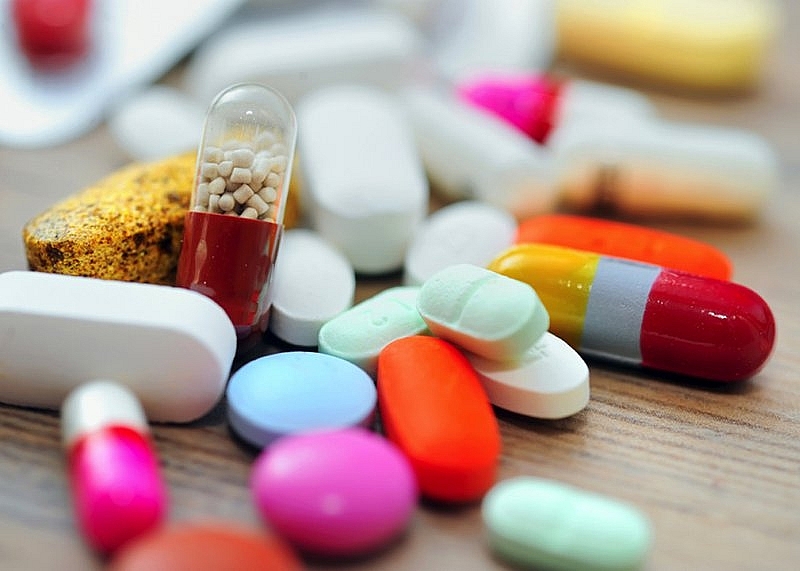Pharmacies battle for market share
 |
| Pharmacies battle for market share, illustration photo |
Pharmacity Pharmacy JSC, the largest retail chain in the sector in Vietnam, recently wrapped up investment of VND735 billion ($31.8 million) in a Series C funding round. The company however did not disclose the names of the investors.
The fresh funding will be used to ramp up Pharmacity’s expansion plans. The company wants to reach a target of opening 1,000 stores across the nation by the end of next year.
Since its establishment in 2012, Pharmacity has operated over 250 modern and convenient stores in its retail pharma chain across seven cities and provinces. The company is aiming for more than VND3 trillion ($130 million) in revenue, up 230 per cent against last year.
At the end of 2019, private equity firm Mekong Capital issued funding to the group. Chad Ovel, a partner at Mekong Capital, said that Pharmacity was the first retailer in the sector to demonstrate that all of Vietnam’s regulations and compliance thresholds can be met and still generate healthy store level profitability.
The investment reflects the attractiveness of Vietnam’s retail pharmacy market, which has gained more momentum over the past few years.
In December, Japanese drugstore operator Matsumoto Kiyoshi Holdings Group announced its official foray into the Vietnamese market by inking a deal with domestic Lotus Food Group. The two will launch the first Matsumoto Kiyoshi flagship store in Vietnam at the end of March, followed by 10 to 15 other stores in the next three to five years. From there, a network of hundreds of stores is planned, meeting the growing demand for healthcare and beauty services of millions of Vietnamese people.
Further back, Vingroup launched a chain of 11 VinFa pharmaceutical stores in Hanoi at the end of 2018. VinFa signed a MoU with Switzerland’s DKSH, a global market expansion service provider, for their comprehensive collaboration in the area of domestic and international distribution of pharmaceutical products.
Mobile World Group and FPT Retail have also ventured beyond their traditional businesses and into pharmacy retail in recent years. In 2017, Mobile World acquired 40 per cent stake in Phuc An Khang, while FPT Retail took over Long Chau’s chain with expectations that its pharmaceutical business would make up 40 per cent of its total revenue within four years. FPT is set to expand the Long Chau chain with 400 outlets by 2022.
Richard Burrage, managing partner of market researcher Cimigo, said that the expansion of modern pharmacy chain outlets in Vietnam in recent years is accelerating and exciting to observe. “Modern pharmacy retail requires scale, as margins are very low, hence it needs rapid acceleration to reach that scale,” he explained. “Vietnam is expected to see increasing expansion beyond pharmaceuticals to own-brand Asian remedies, nutraceuticals, and personal care.”
However, Burrage noted that modern pharmacies oversee a disorganised category, forcing increased transparency and trust in the medicines sold and the ability to trace those medicines to their origin and ensure they are true and not expired.
When comparing modern pharmacy outlets with traditional ones, Ralf Matthaes, managing director of market researcher Infocus Mekong, noted that the key advantages are threefold. “First and foremost is consistency of product and service delivery. Consumers will be able to access more products, service, and advice from these new pharmacies as they battle for market share and profits,” Matthaes said. “Secondly, pricing should become more consistent and in some respects cheaper, as distribution costs and volume of sales should create savings for consumers. Finally, the chains deliver more convenience to consumers.”
Matthaes added that, via technology brought in by these new players, the ability to purchase products via online prescription order filling will make it simpler and faster for consumers to access what they need.
A study by DKSH Business Unit Healthcare points out that modern pharmacy chains still represent roughly 1.5 per cent of the total number of licensed pharmacies, but already 5.5 per cent of the total pharmacy channel retail sales value. And this share, which has been growing by more than a percentage point per year over the last two years, is expected to grow faster.
At a per capita level, Vietnamese healthcare spending is expected to more than double from $170 in 2017 to $400 in 2027. Meanwhile, the country’s pharmaceutical market had an estimated a revenue of $5.9 billion in 2018, an 11.7 per cent increase from the previous year, which makes Vietnam the second-largest medicine market in Southeast Asia.
What the stars mean:
★ Poor ★ ★ Promising ★★★ Good ★★★★ Very good ★★★★★ Exceptional
 Tag:
Tag:
Related Contents
Latest News
More News
- Double-digit GDP growth within reach with shift to higher-value expansion (January 06, 2026 | 08:33)
- Takeda Vietnam awarded for ongoing support of Vietnam’s sustainability efforts (December 31, 2025 | 21:00)
- Vietnam's retail market tops $269 billion in 2025 amid e-commerce boom (December 31, 2025 | 19:00)
- Stronger legal framework urged as trade fraud surges online (December 31, 2025 | 18:58)
- FPT exports first chip shipment to Japan (December 31, 2025 | 10:47)
- AkzoNobel rolls out sustainability campaign “It All Adds Up” for the wood sector (December 31, 2025 | 09:23)
- Textile apparel firms deliver robust earnings despite global tariff pressures (December 30, 2025 | 10:09)
- Businesses ramp up production as year-end orders surge (December 30, 2025 | 10:05)
- Vietjet chairwoman awarded Labour Hero title (December 29, 2025 | 13:06)
- How to unlock ESG value through green innovation (December 29, 2025 | 10:03)





















 Mobile Version
Mobile Version